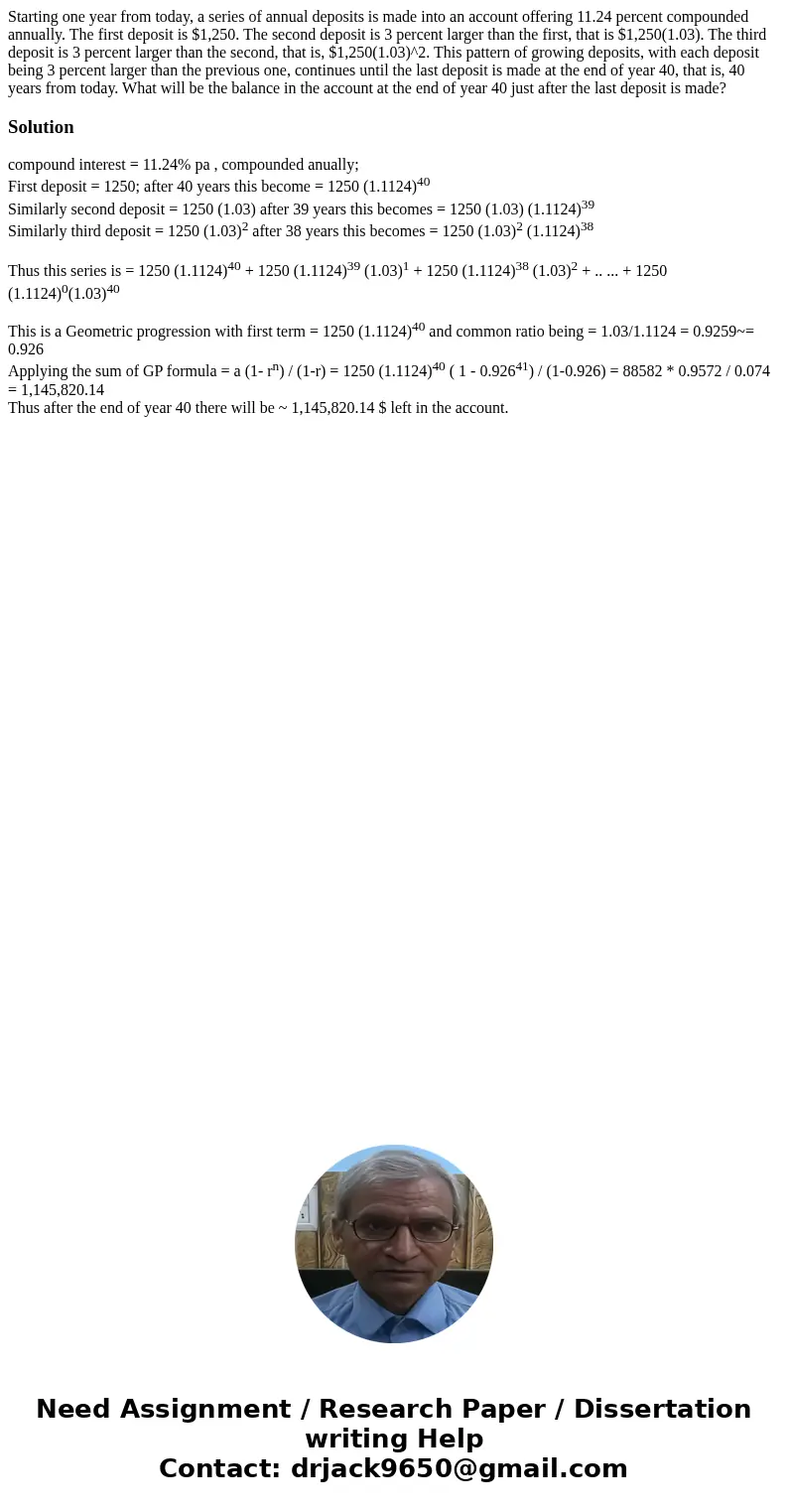Starting one year from today a series of annual deposits is
Starting one year from today, a series of annual deposits is made into an account offering 11.24 percent compounded annually. The first deposit is $1,250. The second deposit is 3 percent larger than the first, that is $1,250(1.03). The third deposit is 3 percent larger than the second, that is, $1,250(1.03)^2. This pattern of growing deposits, with each deposit being 3 percent larger than the previous one, continues until the last deposit is made at the end of year 40, that is, 40 years from today. What will be the balance in the account at the end of year 40 just after the last deposit is made?
Solution
compound interest = 11.24% pa , compounded anually;
First deposit = 1250; after 40 years this become = 1250 (1.1124)40
Similarly second deposit = 1250 (1.03) after 39 years this becomes = 1250 (1.03) (1.1124)39
Similarly third deposit = 1250 (1.03)2 after 38 years this becomes = 1250 (1.03)2 (1.1124)38
Thus this series is = 1250 (1.1124)40 + 1250 (1.1124)39 (1.03)1 + 1250 (1.1124)38 (1.03)2 + .. ... + 1250 (1.1124)0(1.03)40
This is a Geometric progression with first term = 1250 (1.1124)40 and common ratio being = 1.03/1.1124 = 0.9259~= 0.926
Applying the sum of GP formula = a (1- rn) / (1-r) = 1250 (1.1124)40 ( 1 - 0.92641) / (1-0.926) = 88582 * 0.9572 / 0.074 = 1,145,820.14
Thus after the end of year 40 there will be ~ 1,145,820.14 $ left in the account.

 Homework Sourse
Homework Sourse